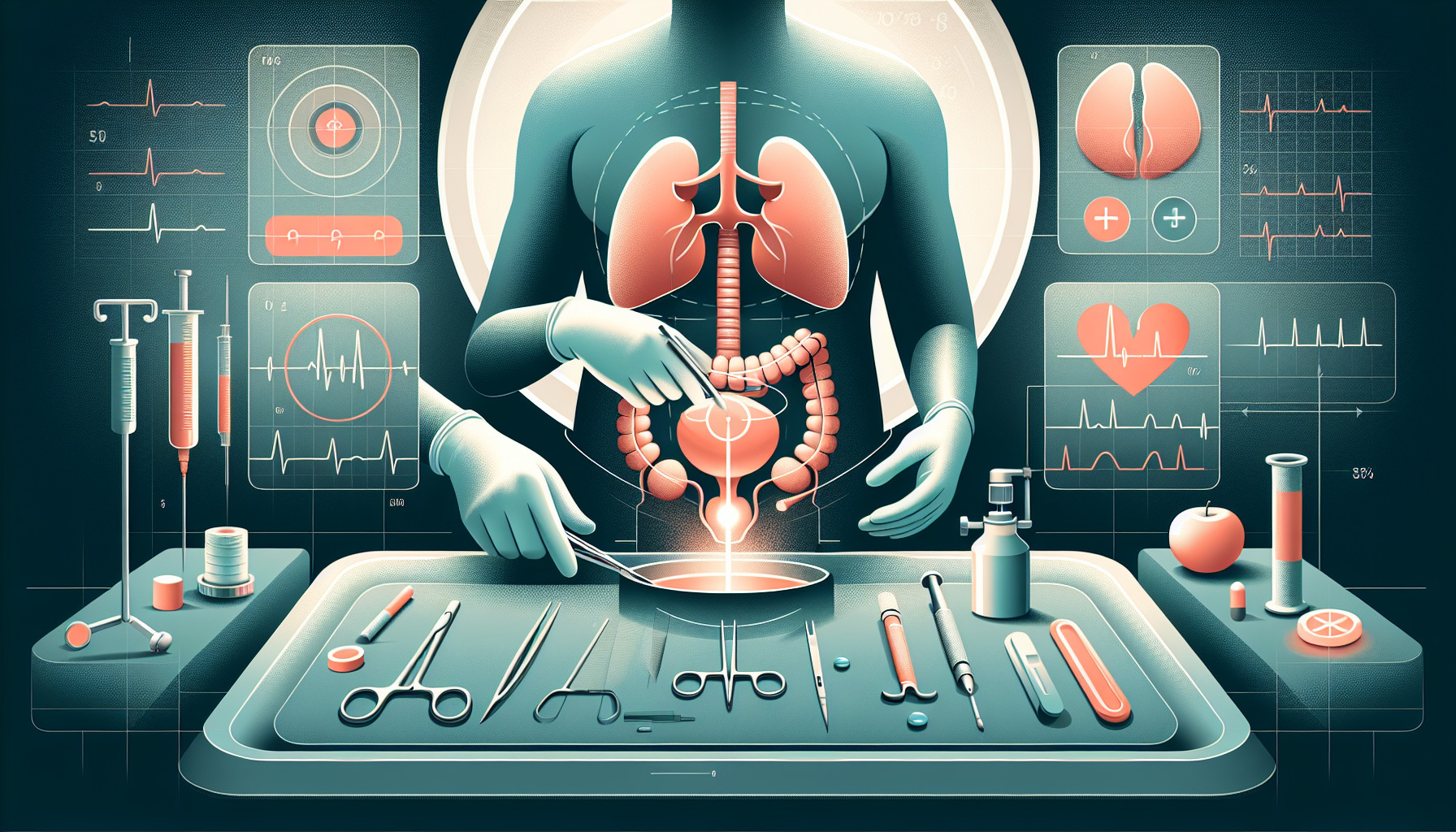Our Summary
This research paper discusses the use and benefits of minimally invasive surgery, specifically robotic assisted radical prostatectomies (a surgery to remove all or part of the prostate gland) performed using the Senhance robotic system. It shares that since November 2019, over 180 of these procedures have been performed at UHC Zagreb.
The benefits of such surgeries include smaller incisions, less blood loss, less post-surgery pain, quicker recovery, shorter hospital stays, less complications, and overall better outcomes compared to traditional open surgery.
However, these surgeries present challenges for anesthesiologists due to limited patient access and potential issues with patient positioning, buildup of gas in the abdominal cavity (pneumoperitoneum), air trapped in the skin (subcutaneous emphysema), and possible swelling of the airway (edema).
The paper stresses the importance of understanding the physical changes that occur during this surgery as they can impact nearly every body system. Thorough preoperative evaluation and careful monitoring during surgery can reduce the risk of complications and help patients recover quickly. The authors conclude that excellent outcomes are the result of a personalized approach to the patient and good communication between the surgical team.
FAQs
- What are the benefits of using the Senhance robotic system for radical prostatectomies?
- What challenges do anesthesiologists face during robotic assisted radical prostatectomies?
- How does preoperative evaluation and monitoring during surgery help in reducing complications in robotic assisted radical prostatectomies?
Doctor’s Tip
A helpful tip a doctor might tell a patient about prostatectomy is to follow their post-operative care instructions closely, including guidelines for physical activity, wound care, and medications. It is important to attend all follow-up appointments and communicate any concerns or changes in symptoms to their healthcare provider. Additionally, maintaining a healthy lifestyle, including regular exercise and a balanced diet, can support the recovery process and overall prostate health.
Suitable For
Patients who are typically recommended for a prostatectomy include those with localized prostate cancer that has not spread beyond the prostate gland. Additionally, patients with benign prostatic hyperplasia (enlarged prostate) that is causing urinary symptoms that do not respond to other treatments may also be candidates for prostatectomy. It is important for patients to discuss their individual situation with their healthcare provider to determine if prostatectomy is the best treatment option for them.
Timeline
- Before prostatectomy:
- Patient undergoes a thorough preoperative evaluation, including physical exams and blood tests.
- Patient meets with their surgical team to discuss the procedure, risks, and benefits.
- Patient may undergo imaging tests to help plan the surgery.
- Patient may need to make lifestyle changes, such as quitting smoking or adjusting medications.
- Patient may need to follow a special diet or bowel preparation before the surgery.
- After prostatectomy:
- Patient is closely monitored in the recovery room for any immediate complications.
- Patient may have a catheter in place to drain urine for a period of time.
- Patient will gradually resume normal activities under the guidance of their healthcare team.
- Patient may need to do pelvic floor exercises to help with urinary control.
- Patient will have follow-up appointments with their healthcare team to monitor their recovery and address any concerns.
Overall, the patient’s experience before and after prostatectomy involves careful preparation, close monitoring, and support from a multidisciplinary team to ensure a successful outcome.
What to Ask Your Doctor
Some questions a patient should ask their doctor about prostatectomy using the Senhance robotic system include:
- What are the specific benefits of robotic-assisted radical prostatectomy compared to traditional open surgery?
- What is the success rate of this type of surgery in terms of removing the prostate gland and reducing cancer cells?
- What are the potential risks and complications associated with this surgery, and how are they managed?
- How long is the typical recovery time after robotic-assisted radical prostatectomy?
- Will I need any additional treatments or follow-up care after the surgery?
- What type of anesthesia will be used during the procedure, and what are the potential side effects or complications?
- How experienced is the surgical team in performing robotic-assisted radical prostatectomies?
- What measures will be taken to ensure my safety and comfort during the surgery?
- How will my progress be monitored post-surgery, and what signs should I watch for that may indicate a complication?
- Are there any lifestyle changes or precautions I should take before or after the surgery to optimize my recovery and long-term outcomes?
Reference
Authors: Bačak Kocman I, Mihaljević S, Goluža E, Peršin Beraković A, Margaretić Piljek N, Kuliš T, Hudolin T, Knežević N, Kaštelan Ž. Journal: Acta Clin Croat. 2022 Oct;61(Suppl 3):76-80. doi: 10.20471/acc.2022.61.s3.11. PMID: 36938550
